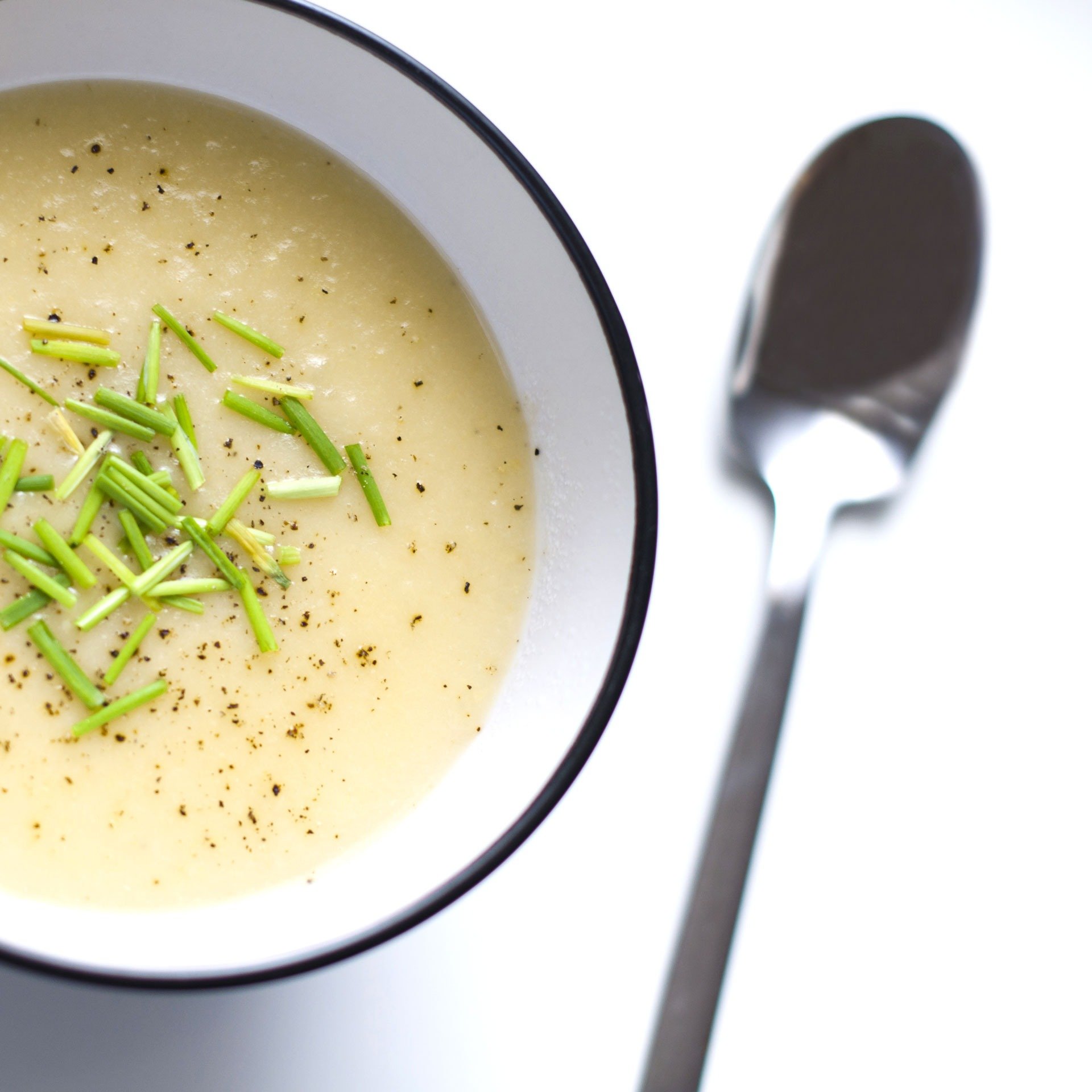Real Food Encyclopedia | Celeriac (Celery Root)
Hairy, gnarly, snaggy, knobby, hulking, bristling, muddy, pitted and tangled. A massive orb covered with unruly, wiry roots, celeriac (Apium graveolens var. rapaceum) looks more like a flower bulb than something you might actually eat. In her “Uncommon Fruits and Vegetables,” Elizabeth Schneider writes that “the swollen form would be at home in the forest of a tale by the Brothers Grimm.”
It’s easy to understand why celeriac, also called celery root, might get the short shrift. But if you take the time to cut away its hairy armor, you’ll discover that homeliness is only skin deep. Celeriac cleans up well, with yellow-beige flesh that’s less starchy than a potato, texturally, but not as watery as jicama. Flavor-wise, it’s a nice balance of herbal, floral, nutty and fatty, with just a hint of celery.
Fun facts about celeriac:
- Despite popular belief, celery root is not the root of the celery we see in grocery stores, but rather of a close relative. Both are descendants of wild celery, native to the Mediterranean and used in some civilizations for medicinal purposes.
- Other names for celeriac or celery root include “celery knob” and “turnip celery.”
- Celery root became available in the U.S. in the 19th century but never became mainstream. Historically, it has been much better known in Europe, Western Asia and North Africa.
What to look for when buying celeriac
When shopping, look for a firm celery root with no soft spots and a tangible heft. Smoother exteriors will be easier to peel. Avoid celeriac that is nearing the size of a cantaloupe — the flesh may be too woody — and instead look for something more like an apple or grapefruit.
Sustainability of celeriac
There is not much industrial celeriac production in the U.S.; the root was not included in the USDA’s 2017 Census of Agriculture, the most current at time of writing. You’re more likely to find celery root at the farmers’ market, a great chance to ask growers about their production methods (and what they like to do with it).
Pesticides
Because it’s not grown on a massive scale, celery root is excluded from the Shopper’s Guide to Pesticides in Produce, a list from the Environmental Working Group that ranks produce by detectable pesticide residue. The best way to avoid pesticides is by shopping organic.
Seasonality
Celery root can be found throughout the fall, winter and early spring, but is a great example of local produce that is truly at its peak during the coldest months of the year. Depending on where you live, you may find celery root in your supermarket produce aisle; more likely, you’ll spot some at the farmers’ market.
Eating celeriac
Storing
Remove stalks and leaves before storing, if still attached (and save them for making stock). Store in a root cellar, if you have one, or in the crisper drawer, ideally wrapped in a kitchen towel or in a paper bag. Whole, unpeeled celery root will keep for a few weeks this way.
Cooking
Before you cook your celery root, you’ll need to prep it. Peeling and paring is usually best done with a sharp chef’s knife. This how-to video with Melissa Clark of The New York Times will set first-timers off on the right foot.
Celery root can be used in a variety of ways: raw, roasted, braised, you name it. One classic French preparation is a slaw dressed with a remoulade sauce, most commonly known as celeri remoulade. Southern chef Virginia Willis offers a similar preparation: grated celery root with a dressing of mayonnaise, Dijon mustard, capers, tarragon and parsley, plus the zest and juice of a lemon. Celery root soup is another favorite — try this recipe from Greek culinary authority Diane Kochilas, who adds fennel, figs and feta.
For a mash with a twist, use one part celery root and two parts potatoes, along with a few whole cloves of garlic. Boil, with a half-teaspoon of salt per pound of vegetables, until fork tender, about 25 minutes. Strain and reserve the cooking liquid, then ladle it in as necessary while mashing to loosen the texture a bit. Add butter, salt, black pepper and fresh parsley to taste.
Nutrition
Although far from a superfood, celery root has some nutritional value. One cup, raw, contains around 65 calories, has two to three grams of both fiber and protein, and mild amounts of calcium and potassium.
Top photo by meteo021/Adobe Stock.


